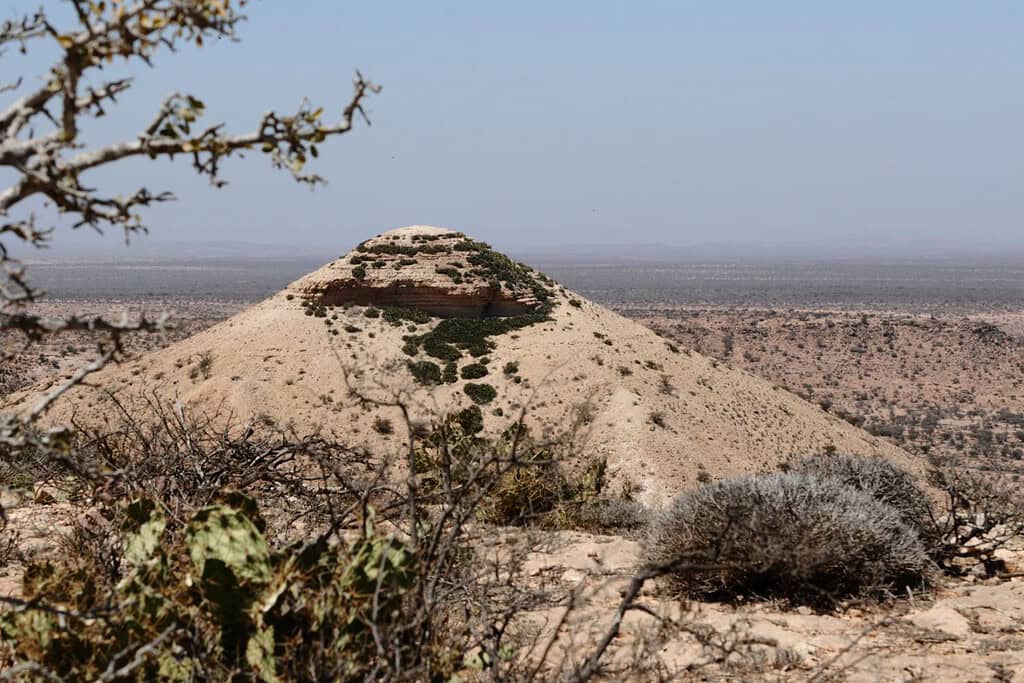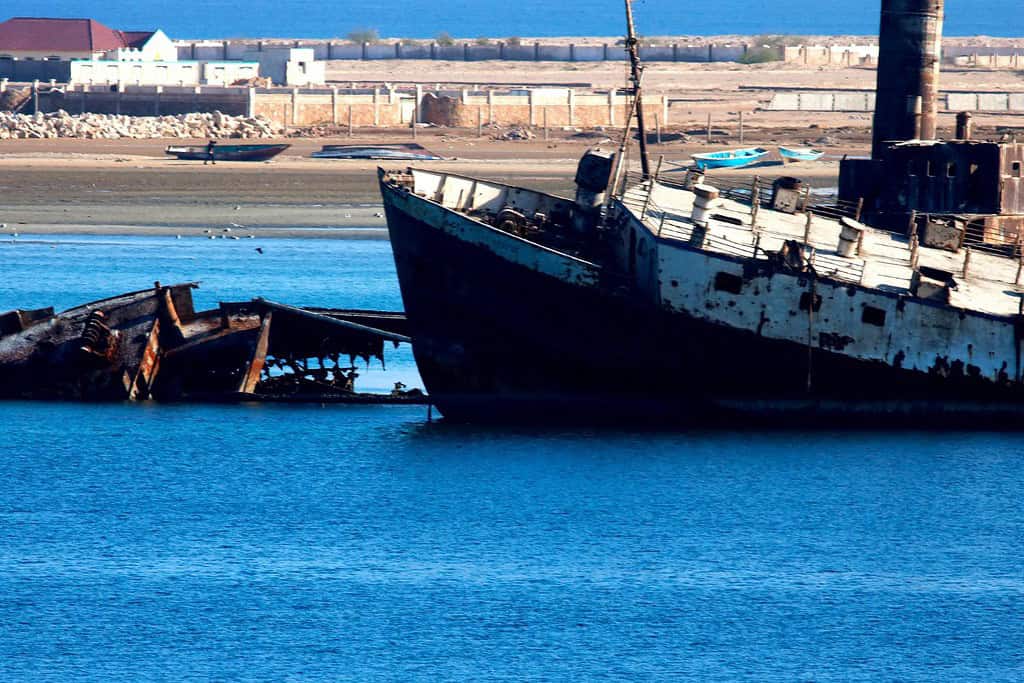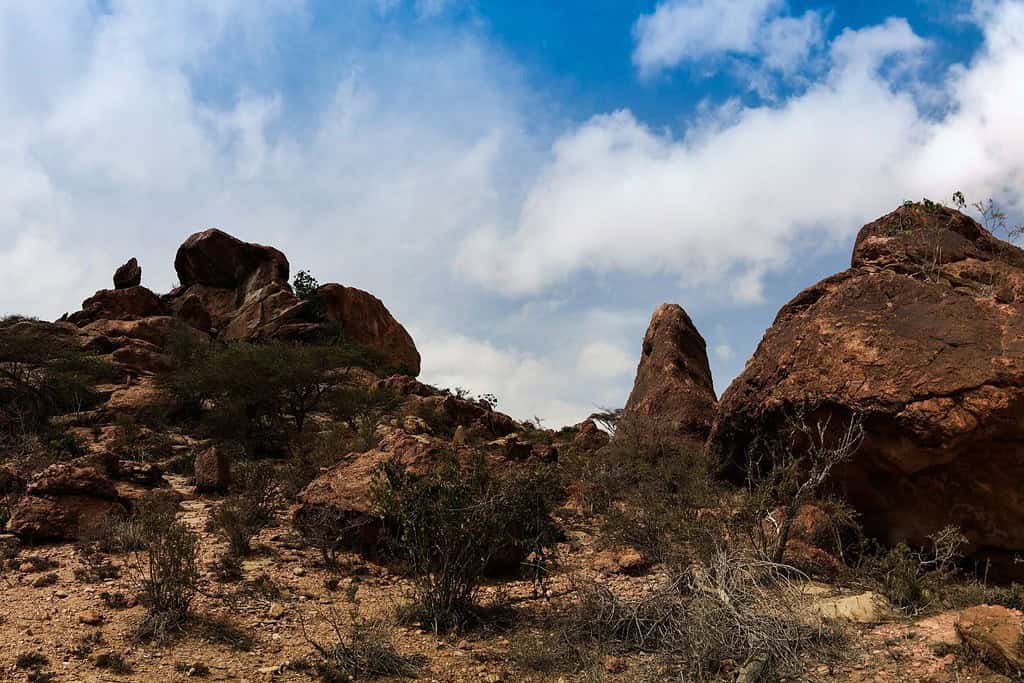Table of Contents
The geography of Somalia is a mesmerizing blend of varied landscapes and historical significance. Located in the Horn of Africa, this nation’s geographic position has been instrumental in shaping its history and cultural identity.
Positioned on the easternmost part of the continent, Somalia’s geography attracts curious travelers with its expansive coastline, vast savannahs, and rugged mountainous regions. From wandering the pristine beaches of the Somali coast to delving into the cultural heart of Mogadishu, Somalia’s diverse terrains and deep-rooted history present an uncharted voyage for brave tourists yearning for an authentic and enlightening experience.
The physical geography of Somalia showcases a canvas of remarkable natural wonders. From the intricate coral reefs along its coast, reflecting the nation’s rich marine heritage, to the diverse ecosystems that range from semi-arid landscapes to lush plateaus, Somalia stands as a testament to nature’s splendor.



Top Geographic Features of Somalia
- Jubba River: This major river in Somalia flows through the southern part of the country, providing essential water resources for agriculture and sustaining local communities.
- Shabelle River: Another vital river, the Shabelle flows primarily in southern Somalia and is crucial for irrigation and farming in the region.
- Somali Plateau: This expansive region dominates much of central and northern Somalia, characterized by its flat landscapes and occasional hills, providing grazing land for livestock.
- Golis Mountains: Situated in the northern part of Somalia, these rugged mountains are home to a unique range of flora and fauna.
- Indian Ocean Coastline: Stretching for over 3,000 kilometers, Somalia boasts the longest coastline on Africa’s mainland, providing ample fishing opportunities and picturesque beaches.
- Hargeisa Valley: Located in the northwestern part of the country, this fertile valley is essential for local agricultural activities.
- Mudug Plateau: This region in central Somalia is known for its semi-arid conditions and sparse vegetation, supporting mainly pastoralism.
- Ras Hafun: Located on the eastern tip of the country, it’s the easternmost point of the African continent and is known for its pristine beaches and rich marine life.
- Guban Desert: This arid region lies in the northwestern part of Somalia, characterized by its desert landscapes and scarce water resources.
- Sool Plateau: Found in the northern region, the plateau is a mix of flatlands and hilly areas, making it conducive for herding and traditional pastoralist lifestyles.
These geographic features play a crucial role in shaping Somalia’s landscape, climate, and cultural history, making them essential elements in defining the country’s geography.
Somalia Geographic Location
Somalia’s geographic location is very strategic, and its position has played a significant role throughout history. Located in the Horn of Africa, the country has been a nexus for trade, culture, and ideas, emphasizing its historical importance.
Borders of Somalia
Somalia shares borders with three countries. Here is Somalia’s physical geography with the neighboring countries and the approximate total length of each border:
- Ethiopia: The border between Somalia and Ethiopia is approximately 1,600 kilometers long, making it the longest international border for Somalia.
- Kenya: The border between Somalia and Kenya is approximately 700 kilometers long.
- Djibouti: The border between Somalia and Djibouti is approximately 60 kilometers long.

| Somalia Neighboring Country | Border Length (Approximate) |
|---|---|
| Ethiopia | 1,600 kilometers |
| Kenya | 700 kilometers |
| Djibouti | 60 kilometers |
These international borders define Somalia’s connections to different regions and contribute to the country’s geopolitical significance as a crossroads between the Horn of Africa and the greater African continent.
Geography of Mogadishu Somalia
As the capital city of Somalia, Mogadishu is a captivating microcosm of the country’s human geography. Here, various ethnic groups, including the Somali majority, Benadiri, Bantus, and Arabs, coexist, contributing to the city’s vibrant cultural tapestry.
Mogadishu, the capital city of Somalia
- City of Contrasts: Mogadishu is known for its stark contrasts, where modern buildings coexist with traditional huts and structures, creating a unique blend of old and new.
- Indian Ocean: The Indian Ocean borders the city, playing a significant role in its trade and transportation.
- Mogadishu’s Elevation: The city is located near sea level, with the vast Somali plains stretching out around it.
- Green Spaces: Mogadishu is home to several beautiful parks and gardens, offering a serene escape amidst the bustling city.
- Mogadishu’s Historical Significance: With a history deeply rooted in the ancient Sultanates, Mogadishu has witnessed various epochs and played a pivotal role in East African politics and trade.
- Diverse Architecture: The city showcases a diverse architectural heritage, reflecting influences from Arab, Italian, and modern styles.
- Music and Dance: Mogadishu has a rich tradition of music and dance, with its folklore and Dhaanto dances being integral to the city’s cultural life.
- Mogadishu Lighthouse: The historic Mogadishu Lighthouse, located in the heart of the city, stands as a testament to the city’s maritime history.
- Mogadishu’s Economy: The city serves as Somalia’s economic and cultural hub, attracting people from all over the country seeking opportunities and education.
- Population Growth: Mogadishu has experienced steady population growth, with a significant influx of people from various regions, leading to urbanization and infrastructure challenges.
Historical Geographical Importance of Somalia
Throughout the ages, Somalia’s geographical significance has made it a sought-after stage for historical drama. As empires and nations rose and fell, from the Ottoman to the indigenous Somali sultanates and European colonists, Somalia’s geographic position played a pivotal role in shaping the world’s history.
- Strategic Gateway: Somalia’s location as a gateway between the Indian Ocean and the vast expanse of East Africa has made it a strategic point for trade, cultural exchange, and military endeavors throughout history.
- Ancient Trade Routes: The indigenous trade routes passed through Somalia, connecting various tribes and facilitating the exchange of goods, ideas, and cultures.
- Arab and Ottoman Influence: Somalia was a key territory during the Arab and Ottoman expansions, given its proximity to the Arabian Peninsula and its strategic importance as a maritime hub.
- Wars of Independence: During the 20th century, Somalia became a focal point of the Wars of Independence, where local heroes fought against European colonial rule.
- European Colonization: Somalia’s geographic position attracted the attention of European powers in the late 19th and early 20th centuries, influencing its political and social landscape.
- Influence of Indigenous Sultanates: Somalia was home to various indigenous groups and sultanates, including the Ajuran, Warsangali, and Geledi, shaping its early history and culture.
- Colonial Era of the British and Italians: The European occupations of the late 19th century had a profound impact on Somalia’s history, leading to a blend of cultures and traditions.
- Nomadic Traditions: The vast landscapes of Somalia, with its arid regions and pastoralist lifestyle, have become symbols of the nation’s cultural and historical identity.
- Influence of Somali Music: Somalia’s position as a confluence of cultures gave birth to unique musical genres that have since been shared across borders, influencing its culture, art, and architecture.
The geographical position of Somalia, located in the Horn of Africa, is a fusion of strategic significance and natural allure. This nation boasts the longest coastline on mainland Africa, touching the Indian Ocean and the Gulf of Aden, and is characterized by arid landscapes, beautiful beaches, and historical port cities like Mogadishu. Somalia’s strategic location has historically made it a nexus of maritime trade and cultural exchanges between Africa, the Middle East, and Asia.
In conclusion, Somalia’s geographical placement has been a critical factor in its historical and cultural development. Its position at the crossroads of key shipping lanes linking the Indian Ocean with the Red Sea has historically made it an important player in regional trade and geopolitics. Despite facing significant challenges in recent decades, Somalia’s strategic location continues to play a vital role in the geopolitics of the Horn of Africa and the broader Indian Ocean region.
More About Somalia
[the-post-grid id=”50422″ title=”Somalia Main page”]
